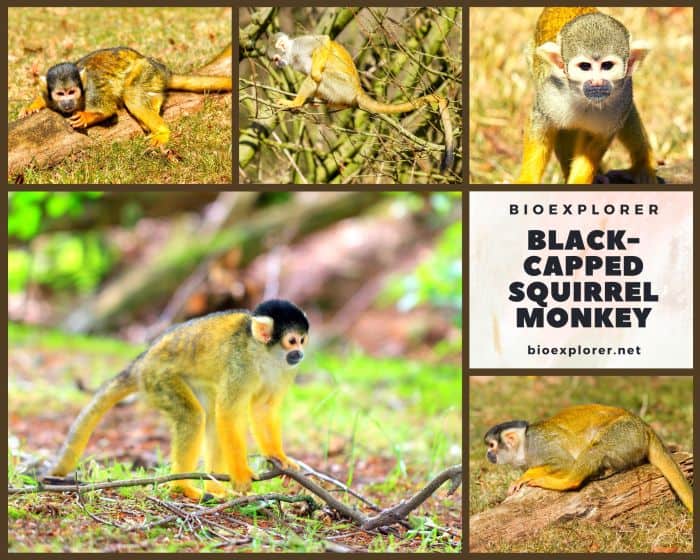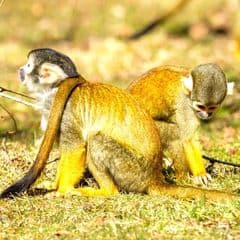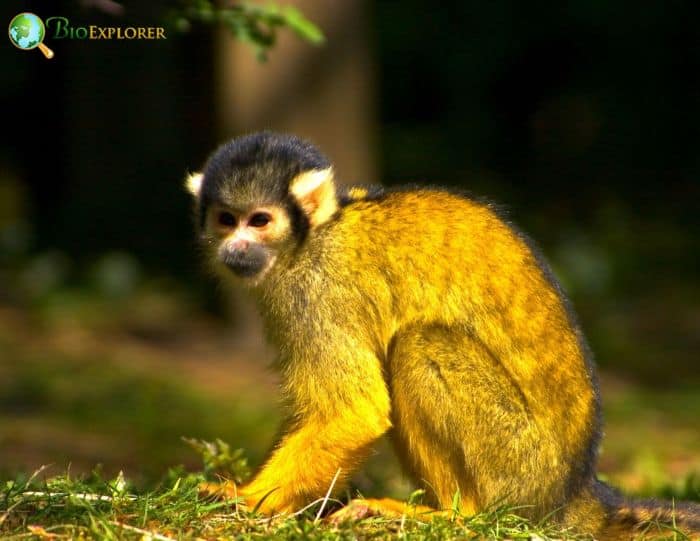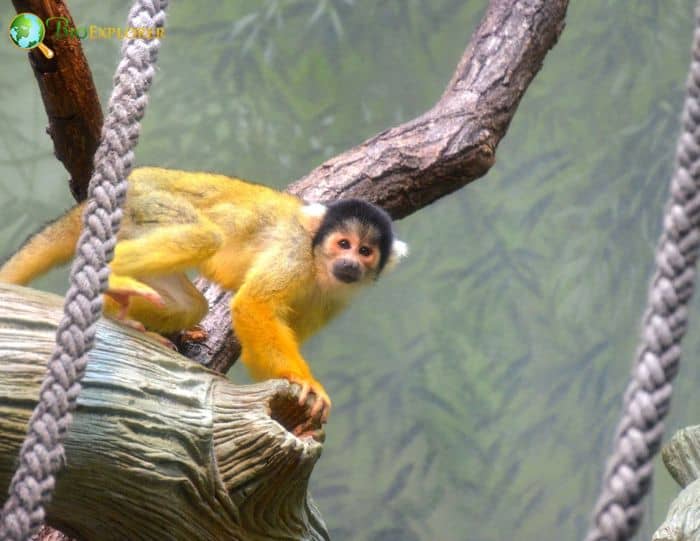
| Animalia | Primates | Cebidae | Saimiri | Saimiri boliviensis |


- Common Name: Black-capped Squirrel Monkey
- Taxonomy Classification Year: 1834
- Monkey Size: 22.5 to 37 cm (8.86 to 14.57 in)
- Skin Color(s): Gray to olive-brown hue
- Habitat: Rainforest
- Diet: Omnivorous
- Native Countries: Bolivia, Brazil, Peru
Black-capped Squirrel Monkey Distribution
Black-Capped Squirrel Monkey Characteristics

The black-capped squirrel monkey[1] is a New-World primate species endemic to the upper Amazon basin in Bolivia, eastern Peru, and western Brazil.
- The monkey’s fur is dense, short, and soft, with most of the fur covering the monkey’s back being gray to olive-brown, while the underside is usually ocher, yellow, or white.
- The head is typically black with white arches over the eyes.
- Typically, the tail is the same color as the body with a bushy black tip and measures between 350 and 425 mm.
What Do Black-capped Squirrel Monkeys Eat?

The Black-capped Squirrel Monkey nourishes on Urucuri Palm (Attalea phalerata)[¶].
Black-Capped Squirrel Monkey Facts
- Primarily, black-capped squirrel monkeys are arboreal and found in native and plantation forests and some managed areas close to running water.
- Along with humans, Saimiri boliviensis is among the few primate species to display a wide variety of play behaviors.
- They mostly dwell in female-dominated groups of about 40 to 75 monkeys. However, males have been observed splitting off after reaching sexual maturity to live in all-male groups.
- Males establish dominance through vigorous fighting and assert dominance through forced submission of an inferior and urine-washing.
- Saimiri boliviensis is among the most vocal of the squirrel monkeys. There are about 26 identifiable calls, comprising peeps and chirps (used in alarms), purrs and screeches (used during mating and birthing seasons), aggressive barks, and cries of pain.
Suggested Reading: All Monkeys of Primates
Cite This Page
APA7MLA8Chicago
BioExplorer.net. (2025, December 26). Black-capped Squirrel Monkey. Bio Explorer. https://www.bioexplorer.net/animals/mammals/monkeys/black-capped-squirrel-monkey/.
BioExplorer.net. "Black-capped Squirrel Monkey" Bio Explorer, 26 December 2025, https://www.bioexplorer.net/animals/mammals/monkeys/black-capped-squirrel-monkey/.
BioExplorer.net. "Black-capped Squirrel Monkey" Bio Explorer, December 26 2025. https://www.bioexplorer.net/animals/mammals/monkeys/black-capped-squirrel-monkey/.











